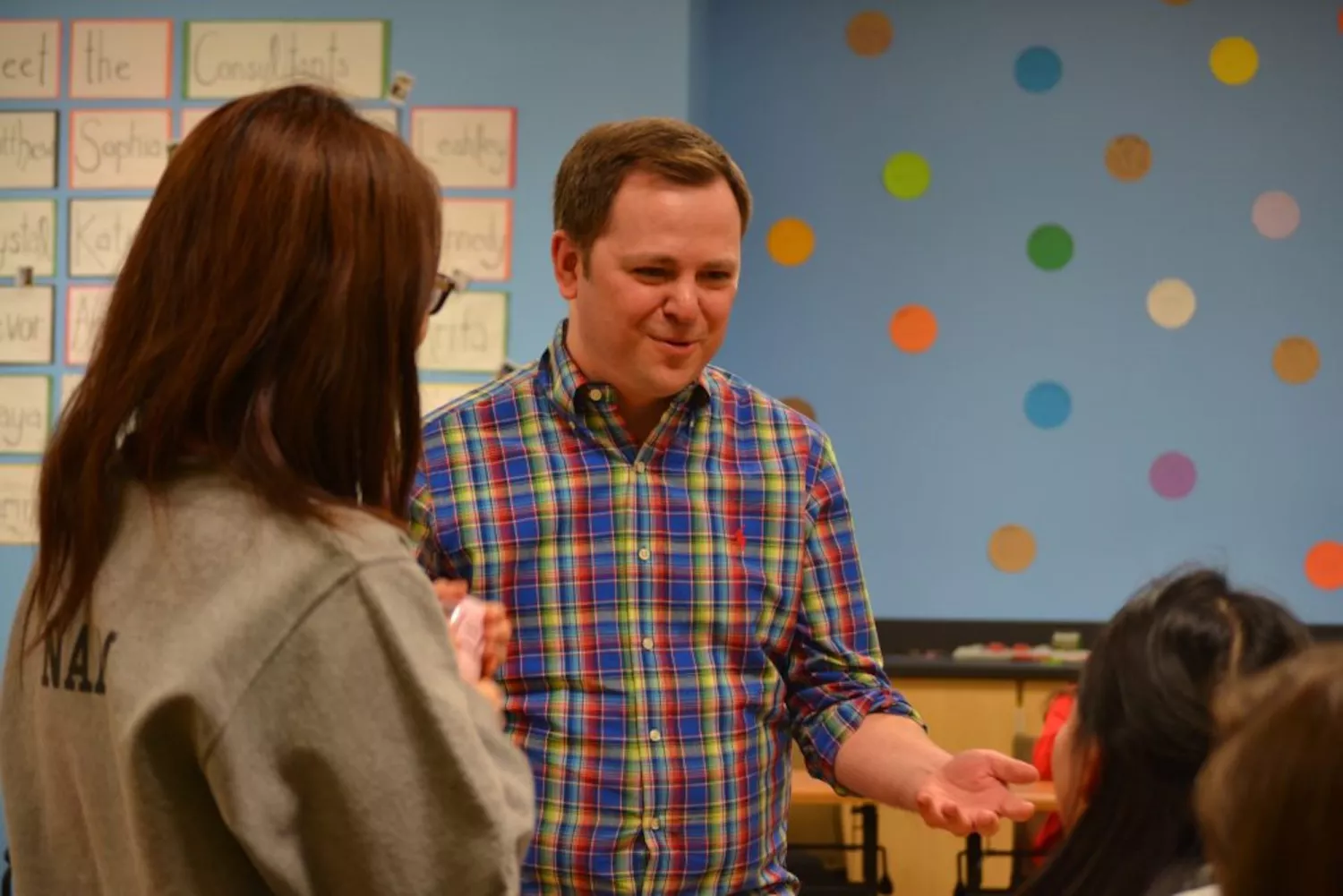Key Takeaways
- After a year of unprecedented disruption and stress for students and educators, more educators are taking the opportunity to more clearly articulate what a grade should represent.
- Educators aren't coalescing around one specific approach.
- Alternative grading “may not look and sound and feel like we think it should or how we learned — but students end up doing great work."
Sarah Schopfer wasn’t too far into her teaching career when she decided the way she assessed her students wasn’t serving their best interests.
There was no specific “a-ha” moment that sparked her interest in an alternative grading system, just a gradual but steady realization during her first two years that conventional grading — the 100-point scale, the focus on student behavior — tended to be unfair, overly subjective, inaccurate, and inequitable.
Schopfer teaches English at Colfax High School in Placer County, California, a rural district where many of her students are eligible for free- and reduced lunch.
“I was having these conversations with students who work jobs outside of school to help their families make ends meet,” Schopfer explains. “They would be upset as they told me about their circumstances and why it was difficult for them to finish an assignment on time."
Ultimately, Schopfer concluded that traditional grading was negatively affecting students' lives.

"As teachers, we should always work to do what is best for the kids. So the way I was grading did not feel good to me. This was not why I became a teacher."
It’s been five years since Schopfer and many of her colleagues in Placer began the process of moving to a more standards-based system that focuses more on mastery and less on behavior.
“My students have opportunities to redo assignments, to learn from their mistakes, and that’s motivating for them as learners," Schopfer says.
Conventional grading practices still have widespread support among educators, but more teachers have chosen to take a different path. It isn't necessarily for everyone. It's challenging, riddled with potholes, and offers no easy solutions. Different educators adopt different strategies at a pace and a scope that's best for their students.
Still, it's a journey that usually begins with the same nagging, urgent question about traditional grading: Why am I doing it this way?
Pandemic Spotlights Flaws
Like some other pillars of U.S. classrooms, including homework, traditional grading has been under scrutiny for years, if not decades. With schools emerging slowly from the COVID-19 pandemic, however, these practices may not be part of the "normal" educators want to return to in the Fall.
“My students have opportunities to redo assignments, to learn from their mistakes, and that’s motivating for them as learners." — Sarah Schopfer
Jeffrey Austin, English department chair at Skyline High School in Ann Arbor, Michigan, definitely sees a pickup in the conversation about grading policies. After a year of unprecedented disruption and stress for students and educators, educators may want to seize on the opportunity to more clearly articulate what a grade should represent.
"No question, more people are talking about it here," Austin says. "The pandemic especially bought it to the forefront. Not everybody is on the same page about what specific course to take, but they're talking about it like never before."
There are three major, long-standing objections to conventional grading practices. They don't accurately measure student learning. They are not intrinsically motivating. Perhaps most importantly, by leaning too heavily on non-academic factors such as compliance or punctuality, they are also endemically biased.
Zero grading, in particular, has been a flashpoint in many districts. Educators and school leaders have banned the practice out of concern that such a low mark on a 100-point scale doesn't measure learning in any way and leaves students in too deep a hole. In addition, zero grading is anything but motivating.
"Instead of working harder, the vast majority of students who get an F tend to withdraw, try less, and come to school less because they’re taking an F for what it actually stands for: failure,” Sarah Duncan of the University of Chicago told Edutopia in 2018. “They interpret an F as ‘You do not belong in this environment.’”
Too often what gets embedded in the grade, says Joe Feldman, a consultant on grading accurately, is the timing of when work is completed.
"Too many external factors that are outside of students’ control can make assignments impossible to complete. Students who have fewer resources and a weaker safety net have been disproportionately harmed by these practices," explains Feldman, who is also the author of Grading for Equity.
This doesn't necessarily mean that soft skills shouldn't be addressed or be a source of feedback from educators — only that they shouldn't be included in the actual grade.
"Soft skills are important but there are implicit biases in the grading and evaluating of behaviors," says Feldman. "And Including them in a grade warps the accuracy of what the student has learned."
Pedagogies of Compliance
Kristal Jaaskelainen, a high school teacher at a small independent school in Ann Arbor, says many traditional grading practices are designed to punish mistakes and are generally counterintuitive to what and how we want students to learn and achieve.
"People have different needs at different times. For me to say to a student,”you will learn at this pace and in this time, and I will grade you on it," does not seem to be aligned with anything that I know about learning or anything that I value."
Teachers — and their students — often discover the hard way that "pedagogies of compliance" don't really work, Jeff Austin adds. "Students have to want to do things. They have plans, they want to learn and grow. So we should give them that space to do so. It may not look and sound and feel like we think it should or how we learned — but they end up doing great work."
“Too many external factors that are outside of students control can make assignments impossible to complete. Students who have fewer resources and a weaker safety net have been disproportionately harmed by these practices.” —Joe Feldman, author of Grading for Equity
Austin and Jaaskelainen were colleagues at the same school when they began to ask questions and challenge assumptions about traditional grading — an important but manageable first step before they embarked on the undeniably challenging work of redesigning how they evaluated students.
They no longer teach at the same school, but Austin and Jaaskelainen collaborate in their advocacy for grading reform. (You can hear from them about the decisions they made in the NEA webinar below) That they chose different models for their own classrooms is no surprise, says Austin. Despite the heightened interest over rethinking grades, educators aren't coalescing around one specific approach.
"No, that's not happening. People are at a different place. This is a very complicated issue."
'I Needed to Make a Change'
Jaaskelainen doesn't use zeros, but she isn't quite ready to give up letter grades entirely. Under a "progress points" system, she gamifies her grading by asking a students in a conference what grade they would like. They then talk about how many points it will take for them to get there.
Progress points gives students a tangible target that they need to hit.
"Showing up for class, engaging in class, doing independent work - students can get points for everything," she says. The target doesn't change, and Jaaskelainen works closely and regularly with each student to help them meet it.
Jaaskelainen believes this and other models open up multiple and continuous entry points for students that help get them to where they need to be. In the upcoming school year, progress points grading will be piloted by half the teaching staff at her school.
Early in his teaching career, Austin had defaulted to traditional grading methods and the enforcement measures that that came with them, creating a more adversarial climate in his classroom than he wanted - or even anticipated when he made the decision to become an educator.
"My relationships with students wasn’t where I wanted them to be," he recalls. "I honestly didn't really know the difference between an 89 and a 90, or a B+ and an A-. I began to feel like I was working against the kids, using grades as a means of control. I realized that I needed to make a change."
Austin started with a delayed grading system. Under delayed grading, to keep students motivated and help build their confidence, teachers choose not to attach grades until the end of a process. Austin would give his students the option of a face-to-face conference with him before they got a grade, or they would fill out a reflection form about their work and he would then write them feedback. Only after this process would a grade be issued.
Eventually, Austin went further - much further. He arrived at labor-based grading, which is based on the idea that the work students put into class is too easily dismissed or at least overshadowed by routine judgments about quality or, again, behavior and compliance.
Under labor-based grading, "learning and judgments about quality, which are always-already biased because of their roots in single standards, are separated," explains Austin.

Each term, Austin creates a "contract" with each student laying out how much work is required to reach a A,B,C or D. Austin meets individually with students five times during the term and provides regular written feedback in between conferences.
It's a philosophy steeped in equity because it acknowledges the different ways different students learn.
For some educators and parents, however, it may sound like the "wild, wild west" for students who may be looking to game the system
Students will find the holes in any grading policy, but that inescapable reality can't be a deterrent, says Austin, who says he would prefer to design a grading system around what’s equitable and more effective, and not whether some students can take advantage of it.
Every Assignment Has to Mean Something
Five years ago, Sarah Schopfer took a long hard look at her assignments to weed out those that didn't align close enough with the standards. She found lot of busywork that didn't help measure student learning.
"I wanted everything to mean something," Schopfer recalls. "It had to be clear to the students why it was important. I owed that to them."
Schopfer also decided that her students wouldn't incur a loss in points if they handed work in late and she implemented a flexible retake policy. Scopfer largely sets aside class participation and other "performance" factors in grading that in her view don't reflect anything tangible about learning. And no more "atomic zeros," she says.
Schopfer also ditched extra credit assignments, which are designed specifically to help certain students to bump up their grades, regardless of whether the actual task has any real value. Extra credit can be inherently biased, because students with greater access to resources are likely more able to complete this additional work.
For Schopfer, a more equitable grading system puts the responsibility on students to show that they know their stuff. "You give them the opportunity and then get out of the way."
No Looking Back
Regardless of the grading model, timeline, or the specific school (although some are clearly more supportive of these reforms than others), no educator who has revised their grading practice will ever say it is easy work. Quite the opposite.
Austin urges any educator who is beginning to question traditional grading to tap into learning communities inside and outside of school. At the end of the day, he says, this is about advocacy, which requires collaboration and a commitment to be in it for the long haul.
"It takes a while to do this work. That doesn't mean it's not urgent, but it does take time."
Relationships and support systems are essential, says Joe Feldman, because teachers aren't trained in how to grade and they fall back onto practices that are unsupported by research.
"It can seem intimidating to tackle this issue, no doubt," he says. "But teachers may find it makes their job easier and more enjoyable, connecting them more deeply into why they went into the profession in the first place."
Five years later, Schopfer continues to revise the standards-based system, which is now being implemented school-wide. Explaining it to parents can be challenge and Schopfer and her colleagues to constantly make sure their classwork is good practice. And managing retakes, she concedes, can be "really tough."
"But it's worth it. I have a much more healthy, positive relationship with students. When you put the power in their hands, they step up... It's the most amazing and most difficult thing I’ve done as a teacher. I could never unsee or unhear the things I was doing before. So for me, there's no going back."


